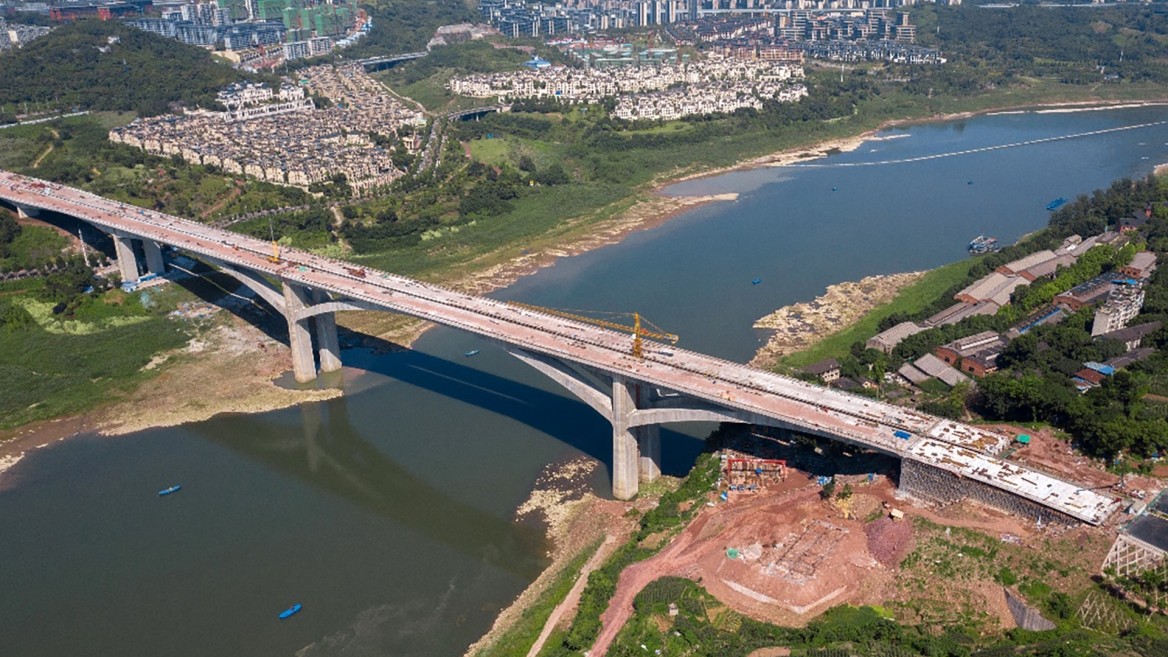Lijia Jialing Bridge

TYLin provided complete design services for the Lijia Jialing Bridge in Chongqing, China, for the project owner, Chongqing Urban Construction Investment (Group) Co., Ltd.
The bridge is the control node project of the second horizontal line in Chongqing's "six horizontal and seven vertical" expressway network.
With a total length of 785 meters, the Lijia Jialing Bridge has been designed as a two-way expressway bridge that carries eight vehicular lanes (four in each direction). It connects the Shapingba District on the west side with the Lijia area of the Liangjiang New Area on the east side.
Benefits of the project include improving Chongqing's expressway network by diverting and relieving heavy vehicular traffic previously carried only by the Gaojiahuayuan and Shuangbei Bridges. The new bridge will also drive growth and development to the west and into surrounding cities.
Requirements for the Lijia Jialing Bridge included a unique design that also harmonized with the continuous rigid frame crossings located upstream and downstream of the new bridge. TYLin’s innovative bridge design adopts the form of a deck beam-arch-composite continuous rigid frame + variable cross-section continuous beam-composite structure - a first-of-its-kind in China.
The final design for the Lijia Jialing Bridge borrows the compression characteristics of the lower chord arch to improve midspan deflection, web cracking, and other problems associated with continuous rigid frame bridges during service.
The project also included an industry first. The Lijia Jialing Bridge is a cantilever structure before the point that joins the top and bottom chords of the beam arch triangle. During construction, a temporary cable was used that allowed the stress state of the bottom chord to be adjusted to ensure that the concrete would not crack.
Project Highlights:
- Since no experiential reference existed for the bridge type, TYLin conducted extensive structural system, general layout, mechanical behavior, and key node structure research.
- The complex structural design integrated the construction technologies of three different bridge types: a beam bridge, a cantilever cast-in-place arch bridge, and a low-tower cable-stayed bridge.
- A high-level Building Information Modeling (BIM) model was developed to assist in the review and delivery process and improve bridge constructability.
- BIM technologies were also used for such studies as integrated analysis and 3D clash detection and visualization.
- TYLin’s design for the thrust-free, self-balancing system reduced the required bearing capacity of the foundations while displaying the desired "beauty of span, strength, and shape."